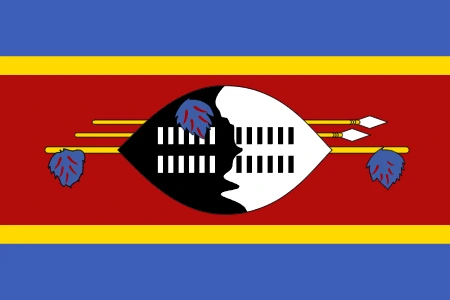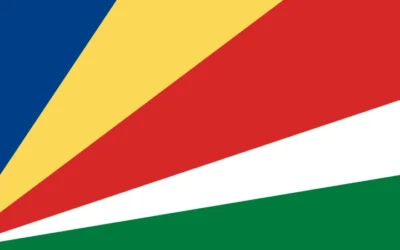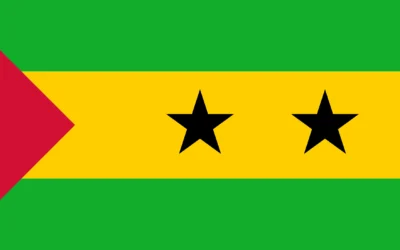Eswatini Travel Guide
Discover Why You Should Visit Eswatini
Why Visit Eswatini?
Eswatini, formerly known as Swaziland, is one of Africa’s last remaining monarchies and offers a captivating mix of cultural richness, dramatic landscapes, and wildlife. Though small in size, it boasts big experiences—from traditional festivals and mountain hikes to game reserves and vibrant local art.
This peaceful kingdom offers a slower pace and authentic connections with local communities, making it a perfect destination for immersive travel.
Ideal for: Cultural travelers, nature enthusiasts, festival goers, and those seeking an off-the-beaten-path African adventure.
Must-Know Facts
Capital/Major City: Mbabane (administrative), Lobamba (royal and legislative)
Language(s): siSwati, English
Currency: Swazi Lilangeni (SZL), also accepts South African Rand (ZAR)
Best Time to Visit: May to September (dry season for wildlife viewing and outdoor activities)
Fun Fact: Eswatini celebrates the spectacular Umhlanga (Reed Dance) and Incwala ceremonies, attracting thousands of participants and visitors
Top Things to Do
Experience traditional Swazi culture at the Mantenga Cultural Village
Attend the Umhlanga or Incwala festivals for a deep dive into royal traditions
Hike in the dramatic Malolotja Nature Reserve or along Execution Rock
Spot rhinos and giraffes at Hlane Royal National Park or Mkhaya Game Reserve
Shop for handcrafted items at markets in Ezulwini Valley
Local Culture & Lifestyle
Eswatini’s monarchy and traditions are deeply rooted in everyday life, with customs like lobola (bride price), initiation rites, and communal gatherings still widely practiced.
The Swazi people are known for their warm hospitality, colorful attire, and traditional dance and music.
Rural life is prevalent, with many people engaged in agriculture, weaving, and artisanal crafts.
Food & Drink Highlights
Street Food: Roasted maize, vetkoek (fried dough bread), grilled meats
Restaurants: Serve traditional stews, maize-based dishes, and some South African influences
Drinks: Mahewu (fermented maize drink), ginger beer, local brews
Desserts: Sweet pumpkin pudding, coconut rice, fruit salads
Main Dish & Culinary Symbols
Signature Dish: Sishwala (maize porridge) served with emasi (fermented milk) or meat stew
Common Ingredients: Maize, pumpkin, beans, beef, chicken, leafy greens
Culinary Culture: Meals are traditionally prepared over open fires and shared during family or community gatherings
Symbols & Icons of the Area
Natural Icons: Ezulwini Valley, Sibebe Rock, Mantenga Falls, Malolotja Highlands
Cultural Icons: Reed Dance, traditional Swazi huts, lion motifs, royal regalia
Hidden Gems & Off-the-Beaten-Path
Shewula Mountain Camp for cultural immersion and panoramic views
Ngwenya Glass Factory for eco-friendly art and glassblowing demonstrations
Phophonyane Falls Nature Reserve for tranquility and birdwatching
Shopping & Souvenirs
What to Buy: Handwoven baskets, colorful textiles, wood carvings, beadwork, traditional Swazi attire
Where to Shop: Ezulwini Craft Market, Swazi Candles Centre, Ngwenya Glass shops
Getting Around
Public Transport: Minibuses available but may be irregular in rural areas
Car Rentals: Recommended for flexible travel across reserves and villages
Taxis: Found in major towns, fares are negotiable
Walkability: Great in smaller towns, nature reserves, and cultural villages
Travel Tips
Travel insurance and up-to-date vaccinations are advised
Photography of royal sites or officials may require permission
Swaziland’s border posts with South Africa and Mozambique make multi-country trips convenient
Cash is more widely accepted than cards, especially in rural areas
Where to Stay
Budget: Guesthouses and hostels in Mbabane and Ezulwini
Mid-range: Boutique lodges and cultural camps with guided tours
Luxury: Safari lodges in Mkhaya and Hlane reserves
Unique: Homestays, eco-camps, and traditional Swazi-style huts
Sample 4-Day Itinerary
Day 1: Arrive in Mbabane, explore markets and cultural exhibits
Day 2: Visit Mantenga Cultural Village and hike to Execution Rock
Day 3: Safari in Hlane Royal National Park and stay overnight at a bush lodge
Day 4: Shop for crafts in Ezulwini and enjoy scenic views at Sibebe Rock






0 Comments